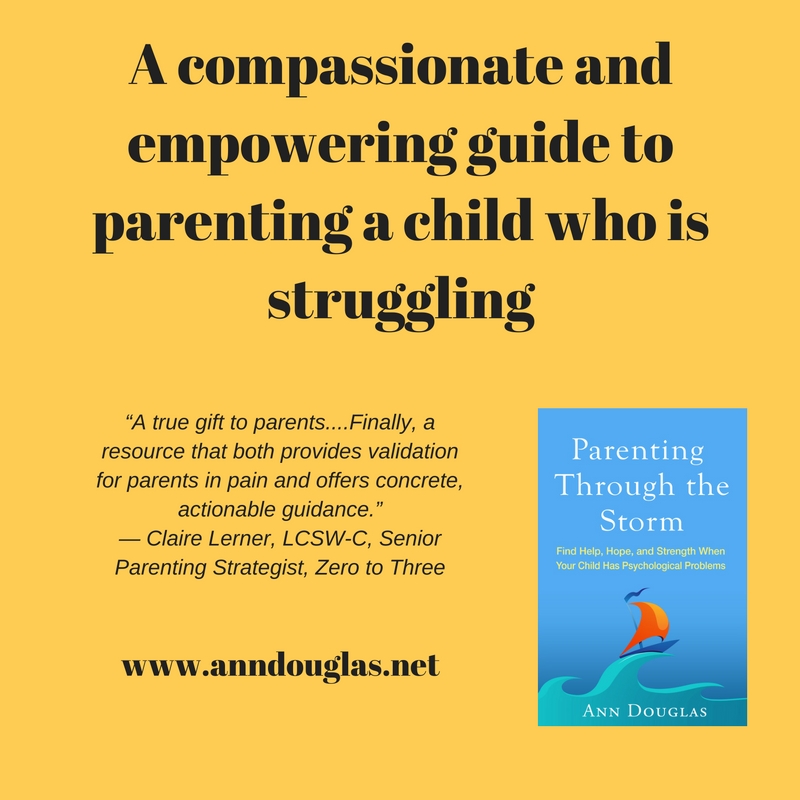How you tell a story matters -- a lot.
When I made the decision to tell my family's story in my book Parenting Through the Storm, I knew I needed to do so in a way that was rooted in love and respect.
I also felt the same way about sharing the stories that other families entrusted me with during the researching of my book: that I had a responsibility to honour their experiences by treating their stories with every bit as much care and respect. This is something I wrote about in a recent post for the Images + Voices of Hope (IVOH) blog: a post that talks about how restorative narrative made it possible for me to tell my family's story.
About restorative narrative
Not familiar with the concept of restorative narrative? It is all about finding strength in the midst of struggle; on seeing resilience rather than brokenness. And it doesn't do so in some superficial, Pollyanna way. "[Restorative narratives] don’t ignore the difficult situation that a person or a community has endured. They explore the rough emotional terrain of the situation, but instead of focusing on what’s broken, they focus on what’s being rebuilt. They reveal hope and possibilities," IVOH explains.
I am sharing this information with you for a couple of reasons.
- I'm hoping you'll be inspired to look for the strength in your own struggles (because we all have struggles) and that you'll adopt a similarly generous perspective when considering the experiences of other families and communities.
- I want to spread the word about the very important work that IVOH is doing with regard to restorative narrative and to encourage you to find out more about what they're doing to reframe the stories our media are telling us about ourselves. And if you happen to be a journalist who is intrigued by the entire idea of restorative narrative (it stole my heart the moment I learned about it!), then you'll also want to know about IVOH's call for applications for its restorative narrative fellowship (which provides you with funding to pursue a story that matters to you and support in telling that story in the context of restorative narrative); and IVOH's annual media summit (which brings together people who are passionate about storytelling approaches aimed at strengthening people, communities, and the media as a whole). I plan to attend that summit and I'll be encouraging other writers, artists, filmmakers, and change-makers to do likewise. So you can expect to hear a lot more about this from me during the months ahead.






